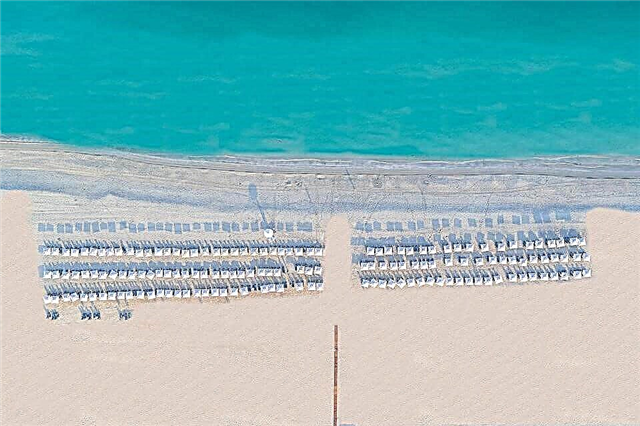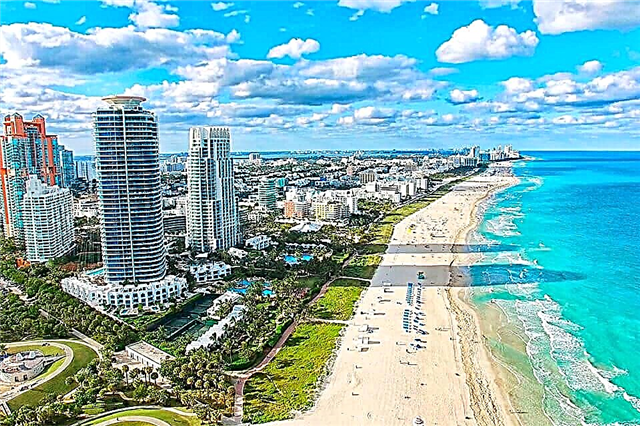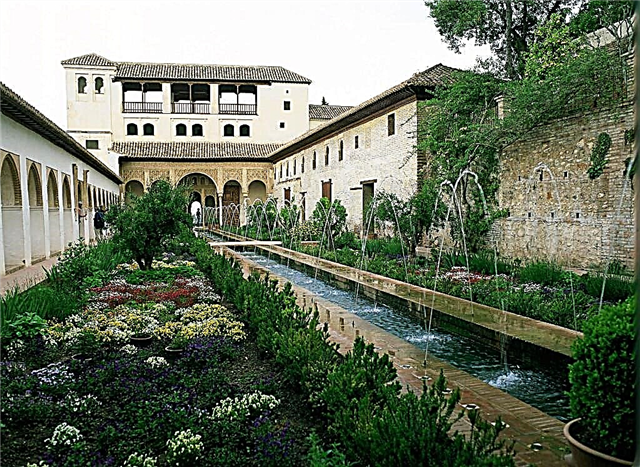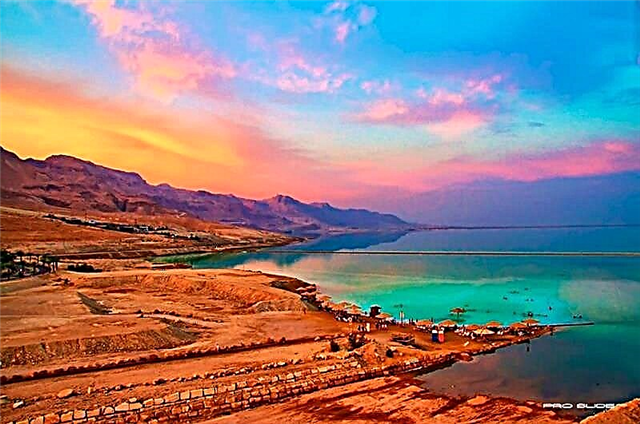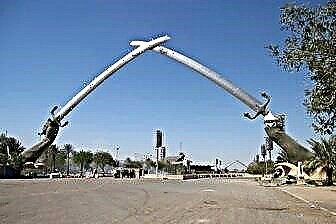The ancient land of Iraq has thousands of years of history. The most valuable cultural attractions of this country are the priceless heritage of all mankind. Modern Iraq is the heir to the legendary Babylon, the ancient civilizations of the Tigris and Euphrates, a place where different cultures and religions have intertwined for hundreds of years. Fabulous Baghdad, the once picturesque "Venice of the East" of Basra, revered by the Shiite Muslims Karbala and An-Najaf - all these places seem to be waiting for thousands of tourists who came to admire the ancient buildings and delve into the history of the country.
Unfortunately, a trip to Iraq nowadays is an extreme tour for the desperate. Echoes of the 2003-2011 Iraqi War have not subsided until now, for how many years there has been a civil war. Many areas of the country where interesting sights are located (Mosul, Kurdistan province) are occupied by terrorists and insurgents. The tourism industry in Iraq is not at all developed, no one guarantees security to a foreigner, since the government does not control many territories of its state.

The best hotels and hotels at affordable prices.
from 500 rubles / day
What to see in Iraq?
The most interesting and beautiful places, photos and a short description.
Ziggurat of the moon god Nanna
A significant and valuable monument of the Mesopotamian civilization. The temple was erected at the behest of King Urnamu during the rise of the mighty dynasty of Ur. The ziggurat was built around 2047 BC and is comparable in size to the Tower of Babel. The structure is well preserved, considering that its age is more than 4000 years.

Erbil Citadel
Located in Iraqi Kurdistan. It is a structure with 30-meter walls and an area of over 10 km². The citadel was built over 5000 thousand years ago as a defensive structure, the city around the citadel grew about 4000 years ago. At various times, the Assyrians, Persians, Babylonians, Turks and Arabs ruled over the citadel.

Babylon
The once great city of ancient Mesopotamia, mentioned more than once in the Old Testament. It was an important cultural, political and economic center of the ancient world, in the II-I millennium BC. was the capital of the legendary Babylonian kingdom, in the 4th century BC. - the capital of the empire of Alexander the Great, in the 1st century BC. - one of the political centers of the Achaemenid state. Has fallen into disrepair since the 3rd century A.D.

Ruins of the ancient city of Hatra
Hatra is a city of Parthian times, located in the north of Iraq. The Tigris and Euphrates rivers flow here, for centuries the settlement was an important trading point, for which various empires fought. In 2015, the city was destroyed by ISIS militants, leaving only ruins of well-preserved temples and squares.

Ancient city of Nineveh
Nineveh was the last capital of the Assyrian kingdom. The period of exaltation fell on the years of the reign of King Sinnacherib. He turned Nineveh into a luxurious and wealthy city, surrounded it with a 12-kilometer defensive wall. In the 1st millennium BC. more than 120 thousand people lived in the city. The library of Ashurbanipal was found on the territory of Nineveh.

Swords of Cadisia
A monument in the city of Baghdad, representing the victory in the Iraqi war. The monument was designed according to the sketch of Saddam Hussein, and later became one of the main attractions of the capital. The height of the swords is more than 40 meters, they are made of metal that was obtained by melting captured weapons and equipment.

Al-Askari Mosque
The main Shiite temple in Iraq, the tomb of the imams Askari and Ali al-Hadi. The building was built in the 10th century AD. and has served as a pilgrimage site for Shia Muslims for many centuries. In recent years, the mosque has become a target for terrorist attacks, the once magnificent golden dome has been destroyed. But she still works, gathering believers for prayer 5 times a day.

Imam Ali Mosque
An important center of Islam in the city of Najef. According to Shiite tradition, Adam and Noah are buried at the construction site of the mosque. Over the centuries, the mosque was repeatedly destroyed, but it was always restored again, so it has survived and survived to this day. Many Shia preachers studied in the temple and contributed to the development of this branch of Islam.

Great Mosque in Samarra
A unique architectural complex in the city of Samarra. The minaret is made in the form of a spiral ascending to the sky, the width of the base is 33 meters, the diameter of the highest point is 6 m. The tower rises above the valley of the Euphrates and the Tigris, recalling the presence of Islam in these places. It is considered one of the main Muslim shrines.

National Museum of Iraq
The largest and oldest Iraqi museum, where the most valuable exhibits were once exhibited: artifacts preserved from the times of the civilizations of Mesopotamia, jewelry, statues of ancient Sumerian deities, various household items, weapons. During the Iraqi war, the museum was plundered; out of 15 thousand stolen exhibits, only 4 thousand were returned.

Abbasid palace
The residence of the Abassid dynasty (originating from the uncle of the Prophet Muhammad Abbas ibn Abd al-Muttalib) XII-XIII centuries. These rulers have been at the head of the state for over five centuries. The building is a striking example of the architecture of Arab Mesopotamia. The inner halls were richly decorated with mosaics; elements of the outer decoration and walls have survived to this day.

Monastery Mar-Mattay
One of the oldest Christian monasteries on Mount Alphaf. It was founded in the 4th century. AD a hermit named Matthew who fled from persecution by the Roman authorities. Mar-Mattai translated from Arabic means "Saint Matthew". Over the past centuries, the monastery has been attacked several times by Kurds. Now the monastery is functioning; it is a refuge for people fleeing from militants.

Rabban Ormizd Monastery
Another ancient Christian monastery of the 7th century. on the territory of Iraq. He was repeatedly attacked by Muslims who destroyed and plundered the territory. In the XIX century. the Catholic monk Jibrail Danbo, with the help of his associates and the Bishop of Mosul, revived the monastery, but the pogroms continued. In 1975, the monastery was renovated, since then pilgrims have come to the monastery.
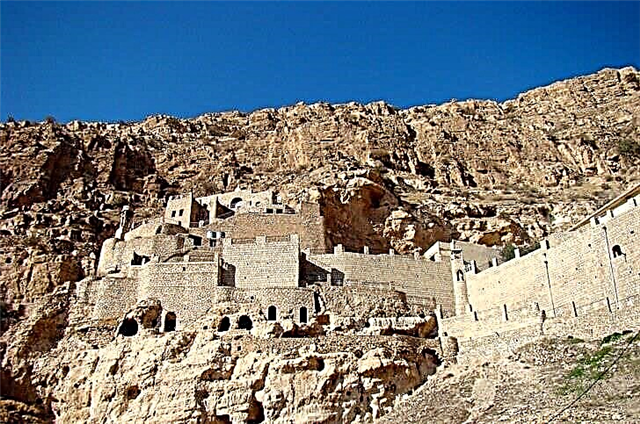
Shanidar cave
Located in the mountains of Kurdistan in Iraq. Traces of Neanderthals were found in the cave. Researchers who support the theory of the divine origin of the universe constantly report unique finds in the cave. These findings confirm the reality of the Great Flood, which led to the death of mankind (according to the Old Testament).




